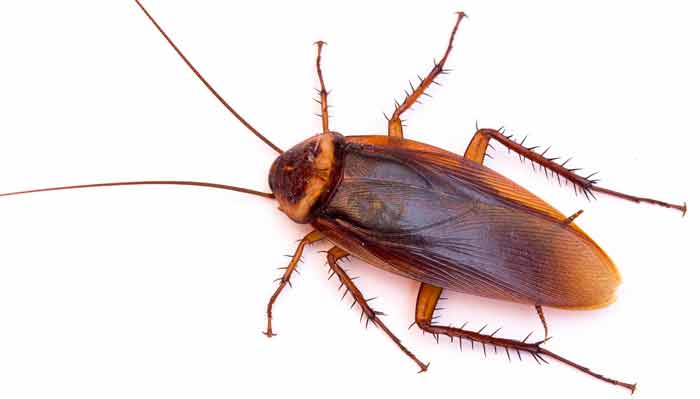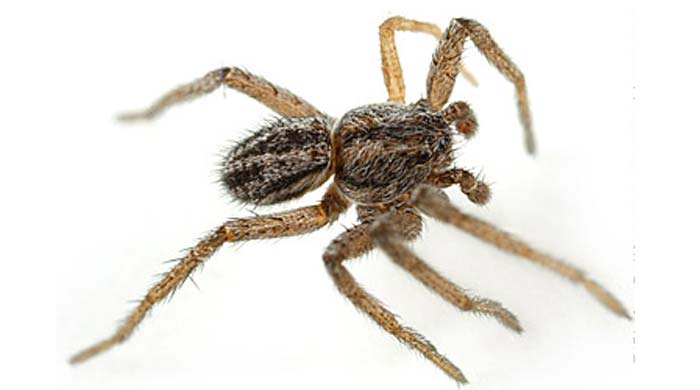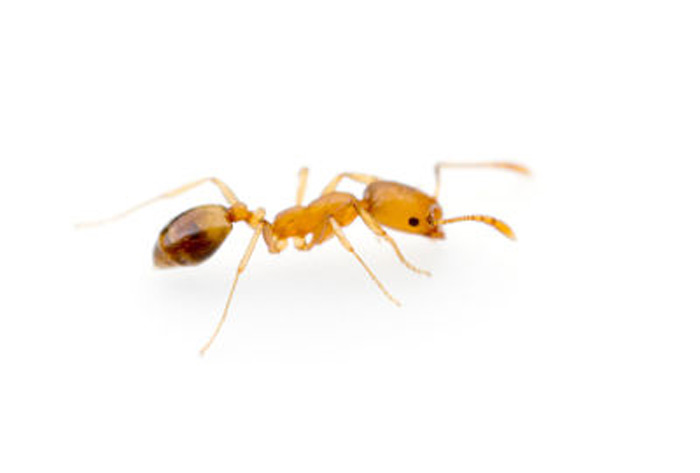In an effort to improve the available bed bug eradication methods, biological pest control has come into play. Natural predators of bed bugs are quite many. From roaches, ants to different species of spiders. Herein find insects/bugs that eat on these creepy crawlers and the practicability of this method
Table of Contents
Do bed bugs have natural predators
Indeed yes. Bed bugs have enemies that are known as predators. They feed on them from time to time.
The use of some chemicals to control bed bugs has proven ineffective because the infestation comes back as soon as you stop using the chemicals.
It is in most cases evident that the chemical components are poisonous and possess so many side effects. Hazardous is what you call them.
Following the ban of the use of chemicals such as DDT, Europe and countries like America have witnessed the comeback of bed bug infestations.
This therefore leaves so many gaps to be filled in terms of eradicating bed bugs. These insects are hard to treat but the good news is that maybe they can be tamed using natural remedies.
How Effective are natural predators?
The downside of using natural methods to control the population of bed bugs is that you will have to do away with the predators in the long run. This thus makes the method to be somehow unreliable for many homes.
The other challenge is that harboring some of the predators tend to pose a danger to your home. Some of the predators not only feed on the bugs but also bite human beings.
Other predators are even vectors of diseases. Most of these predators hide in crevices and dark areas. These areas include the bed rooms and under coaches. It is uncomfortable, for example, to have roaches in these places.
Do cockroaches eat bed bugs?
According to the American Cockroach Society on the roach forum, cockroaches are frightening and disgusting pets. They are feared because they are associated with childhood asthma and could therefore contaminate food at home and even bring germs to the human population.
There are about 4,000 types of cockroaches in the world. They are nocturnal insects and need supply of foods that have high content of water and sugar. Just like cockroaches, the bed bugs also come out at night. The cockroaches also inhabit the furniture and dark corners of your home.
Once the night sets in, the cockroaches are able to pursue the bed bugs from their hiding places and then make a meal out of them. This is done even before the bed bugs get a chance to suck the human blood.
Despite killing the bugs, the cockroaches are also known to rid the environments of any organic litter. On a sad note, the cockroaches are accused of causing a lot of contamination.
An amazing fact is that despite the cockroaches feeding on organic matter and killing bed bugs, they are able to survive for about a month without food.
Bed bugs are called the hardest insects on earth because they have the capability of holding their breaths for about 45 minutes.
Apart from that, they are able to survive any radiation that is caused by nuclear reaction and can remain in a vacuum for up to 10 minutes.
To avoid any likelihoods of negative effects, it is worthwhile to keep the less poisonous cockroaches. One of such species is the Madagascar Hissing cockroach.
It is in mostly kept as a pet. In fact, it is also advocated as a childhood pet. This species could survive about seven days with severed head or even longer with a proper hydration.[1]
What Other bugs/insects eat bed bugs
There are a number of bugs and insects that feed on bed bugs. The list below just gives a number of them.
Spiders (Thanatus flavidus)
This is a family of spiders that has been found to feed on bed bugs. It belongs to a family that is called Philodromidae.
This kind of spider is found in Greece, Russia and Ukraine among other countries. The list of spiders of this species that feed on bugs is still long. This is the species that is most effective and reliable though.
Mites
The commonest species of mites are the common house dust mites. They live in areas like the bedding just like the bugs and hence end up feeding on them.
Straw Itch Mites-They are a very small and usually live on the larva and adults of other small pests. These mites attach themselves to the host pests and get a meal from their bodily fluids.
House Centipedes
They feed on a number of invertebrates like bed bugs, spiders, termites, cockroaches, silverfish, ants, and other household arthropods. The commonest centipede that can feed on bed bugs is the house centipede.
Masked bed bug hunter
According to Wikipedia, Reduvius personatus or the masked hunter is an insect belonging to the assassin bug (Reduviidae) familyAnother group of predators is the masked bed bug hunter.
The name masked comes about from the idea that nymphs camouflage themselves with dust
They are about 17 to 22 millimeters in length. Their color is dark brown and black in other cases. Their carapaces are glossy and have wings thus can fly.
These predators not only feed on the bed bugs but also all the house infesting arthropods. They are not effective in dealing with bed bugs because they can bite and their bite is equated to a snake bite.
Ants
Pharaoh ants are also key. They are small inside and the mature ones only reach 1/16 inches. They resemble the normal household ants but they are honey colored instead of the known black color. They reproduce very fast and a typical female pharaoh ant lays about 400 eggs in her lifetime.
These ants thrive well in humid environments. Apart from bed bugs and their eggs, they are also known to feed on anything ranging from food to even clothing.
On a sad note, these predators are not to be relied on because they have been found to transmit diseases mechanically. This is according to the sciencing website.[2]
Another group of ants that are thought to feed on bed bugs are the fire ants. They are reddish-brown in color and have double pedicel.
nest disturbance including a vigorous and painful sting. In most cases, these ants stay outdoors however, they will occasionally enter your house to look for food and this when they will prey on bed bugs.
Lady bugs
They are common and are mostly used to control bed bug population in gardens. They also have been known to feed on the tiny insects and ants that feed on plants. What is not clear is whether they kill bed bugs.
Other known predators include
- Thread-legged bug (Ploiaria domestica)
- Chelifer cancroides
Further Reading
- Bed Bug life cycle-Eggs, Baby(Nymph) to Adult Stages & Pictures
- How to Detect Bed Bugs-Detectors, Light & Verifi Reviews
- How to know if Bed Bugs are gone after Treatment & what to do
- Will Bleach Kill Bed Bugs-How does it work?
- Best Bed Bugs Traps- DIY Homemade, Co2, Yeast + Reviews
- How to Deal with Bed Bugs in your Car
- Bed Bugs in Couch-Covers, Signs & How to Get rid
- How to Kill Bed Bugs with Steam: Best Steamers & Guide + Tips
- Does Alcohol Kill Bed Bugs? Rubbing, Isopropyl & Percentage
- How Long do Bed Bug Bites Last, Take to Appear, Go Away & Heal
- Natural Predator of Bed Bugs-What Insects/Bugs eat Bed Bugs?
- Can Bed Bugs Live in TVs & Other Electronics? How to get them out
- Do Bed Bug Bites Itch or Hurt?
- Bed Bug Interceptor-How it works, DIY & Reviews
- What do Bed Bug Bites look like? Pictures & Identification Steps
- What Attracts Bed Bugs & things they Hate /Dislike Most
- Can Bed Bugs make you Sick? How are they Dangerous?
- Can Bed Bugs Fly-Do they have Wings-How Far can they Travel
- Diatomaceous Earth for Bed Bugs-How to Use & Best Reviews
- DIY Bed Bug Heat Treatment: Success Rate,Temperature Chart, Preparation & Reviews
- Does Vinegar Kill Bed Bugs? Can it be Used for Bites?
- How to Get Rid of Bed Bugs on Mattress- Best Covers, Protectors & Encasement Reviews
- Can Bed Bugs live on or Bite Dogs & Cats (Pets)?
- Bugs that look like Bed Bugs-Beetles & Others that Resemble or Mistaken
- Bed Bug Bombs-Do Foggers work? Effectiveness & Reviews
- Bed Bug Repellents -Natural Homemade, Creams, Electronic & Reviews
- How do Bed Bugs Spread? Are they Contagious? How Fast/Easily from Person, Room or House?
- Best Bed Bug Sprays-DIY Homemade, Natural, Brand Reviews
- Flea Bites vs Bed Bug Bites + Differences & Pictures
- How to Prevent Bed Bugs-Bites while Sleeping at Home, School, Hotel & Travelling
- How to get rid of Bed Bugs on Clothes-Can they Live, Bite through or Travel on Laundry
- Fumigation for Bed Bugs-Cost & Preparation
- How to get Bed Bugs out of Carpet with Cleaner & Powder
- How Long do Bed Bugs Live Without Food, Host, Air, in Cold & After Spraying
- Bed Bug Rash on Skin, Pictures, Treatment, Allergy & Symptoms
- Where do Bed Bugs Hide and how to Find them
- Mosquito Bites vs Bed Bug Bites-What’ are the differences
- Identifying Bed Bug Eggs- How they look like, Images & destruction
- How do you know if you have Bed Bugs-Symptoms & Signs
- Bed Bug vs Spider Bites- Differences with Pictures
- Bed Bug Sniffing Dogs-How they smell, Sense, Roscoe, Breeds & Cost
- What are Bed Bugs? Names in other Languages
- Where do Bed Bugs come from? Causes, how you get them & Start
- How to Kill/Get Rid of Bed Bugs Fast Yourself Naturally for Good
- Bed Bugs in Hair Symptoms, Pictures & Get rid
- Types of Bed Bugs
- Bed Bug Poop/Droppings-How it looks like, Pictures +Identification
- Bed Bug Shells, Cast Skin & Exoskeleton
- Can you See Bed Bugs with the Naked eye? Pictures, Size, Color & Anatomy
- Dust Mite vs Bed Bug Bites
Sources
[1] http://www.roachforum.com/index.php?/topic/1537-cockroaches-eat-bed bugs/
[2] https://sciencing.com/natural-enemies-bed bugs-6976306.html



